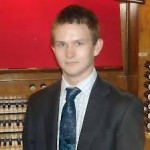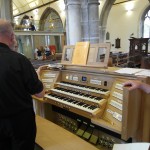St Augustine’s, Bexhill, 5 October 2013
Mozart’s unfinished C minor Mass is not long enough for an evening by itself and on this occasion was sensibly supported by shorter liturgical works by near contemporaries.
The opening Kyrie of the C minor brought us solid choral sound and more than sufficient orchestral accompaniment, and there was a good sense of attack in the Gloria. Claire Williamson had no difficulty with the coloratura of Laudamus te and her duet with Sophie Pullen for Domine Deus was pleasing. Sophie Pullen herself floated the heady lines of Et incarnatus est with ease. If the chorus suffered with occasional poor entries they managed to pull things together for the Sanctus and concluded the work with aplomb, thanks to the strengthening of the solo quartet.
Kenneth Roberts’ approach to the Mass was brisk and business-like but he was more lyrical for Schubert’s Magnificat D486, which allowed all the soloists to blossom before a finely honed Gloria patri.
Amidst the sacred works came two interlopers. The strings of the Sussex Concert Orchestra gave us a workmanlike rendition of Mozart’s Eine kleine Nachtmusik, and Peter Grevatt sang the count’s aria from Act 3 of Le Nozze di Figaro. Though splendidly done it did seem a little out of place.
The evening concluded with J C Bach’s Magnificat in C. The bassoons left at this point which was a pity given the fine solo they had provided during Mozart’s Et incarnates est but Andy Gill’s solo trumpet more than compensated. The work looks back rather than forward and is easier on the chorus than the earlier works. It proved to be a fine conclusion to a rewarding evening.
The next event for Bexhill Choral Society will be Carols for Choir and Orchestra at 7.30pm Saturday 7 December, at St Augustine’s, Bexhill. www.bexhillchoral.org.uk 01424 213352 BH







